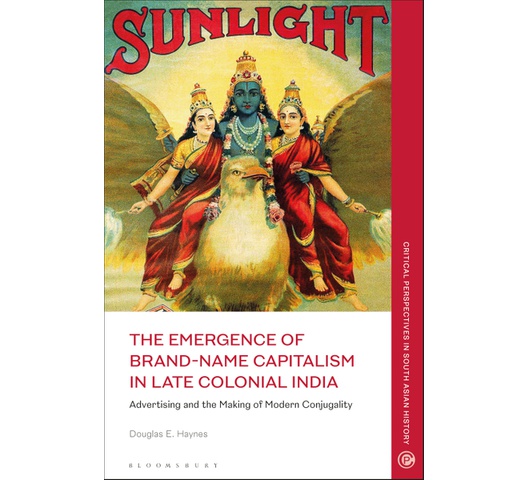
The Emergence of Brand-Name Capitalism in Late Colonial India
This is an eBook that you can download electronically.
This book examines the emergence of professional advertising in western India during the interwar period. It explores the ways in which global manufacturers advanced a 'brand-name capitalism' among the Indian middle class by promoting the sale of global commodities during the 1920s and 1930s, a time when advertising was first introduced in India as a profession and underwent critical transformations.
Analysing the cultural strategies, both verbal and visual, used by foreign businesses in their advertisements to capture urban consumers, Haynes argues that the promoters of various commodities crystalized their campaigns around principles of modern conjugality. He also highlights the limitations of brand-name capitalism during this period, examining both its inability to cultivate markets in the countryside or among the urban poor, and its failure to secure middle-class customers. With numerous examples of illustrated advertisements taken from Indian newspapers, the book discusses campaigns for male sex tonics and women's medicines, hot drinks such as Ovaltine and Horlicks, soaps such as Lifebuoy, Lux and Sunlight, cooking mediums such as Dalda and electrical household technologies. By examining the formation of 'brand-name capitalism' and two key structures that accompanied it- the advertising agency and the field of professional advertising- this book sheds new light on the global consumer economy in interwar India, and places developments in South Asia into a larger global history of consumer capitalism.
SKU: 9781350278066
Format: EPUB
Analysing the cultural strategies, both verbal and visual, used by foreign businesses in their advertisements to capture urban consumers, Haynes argues that the promoters of various commodities crystalized their campaigns around principles of modern conjugality. He also highlights the limitations of brand-name capitalism during this period, examining both its inability to cultivate markets in the countryside or among the urban poor, and its failure to secure middle-class customers. With numerous examples of illustrated advertisements taken from Indian newspapers, the book discusses campaigns for male sex tonics and women's medicines, hot drinks such as Ovaltine and Horlicks, soaps such as Lifebuoy, Lux and Sunlight, cooking mediums such as Dalda and electrical household technologies. By examining the formation of 'brand-name capitalism' and two key structures that accompanied it- the advertising agency and the field of professional advertising- this book sheds new light on the global consumer economy in interwar India, and places developments in South Asia into a larger global history of consumer capitalism.
KES 5,736

International delivery
Free click & collect
When you buy an ebook from TBC, you will be given a code to download your
purchase from our ebook partner Snapplify. After you have redeemed the code and
associated it with a Snapplify account, you'll need to download the Snapplify Reader
to read your ebooks. The free Snapplify Reader app works across iOS, Android,
Chrome OS, Windows and macOS; on tablets and mobile devices, as well as on
desktop PCs and Apple Macs.
You're currently browsing Text Book Centre's digital books site. To browse our range of physical books as well as a wide selection of stationery, art supplies, electronics and more, visit our main site at textbookcentre.com!
Reviews
This product does not have any reviews yet.
Add your review
